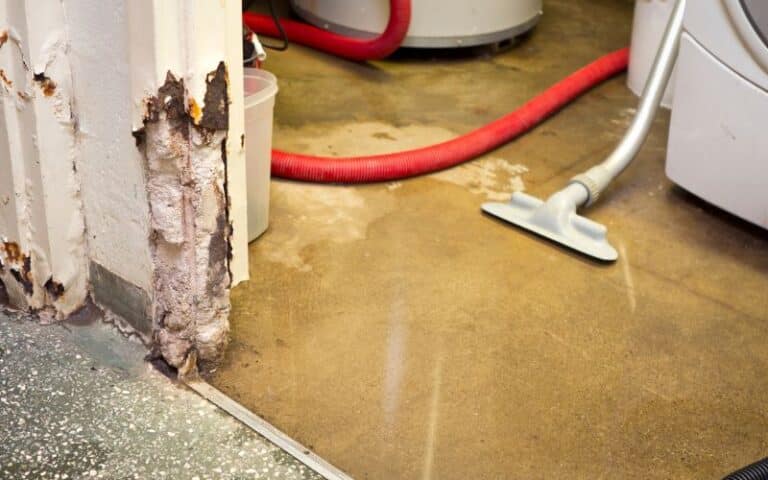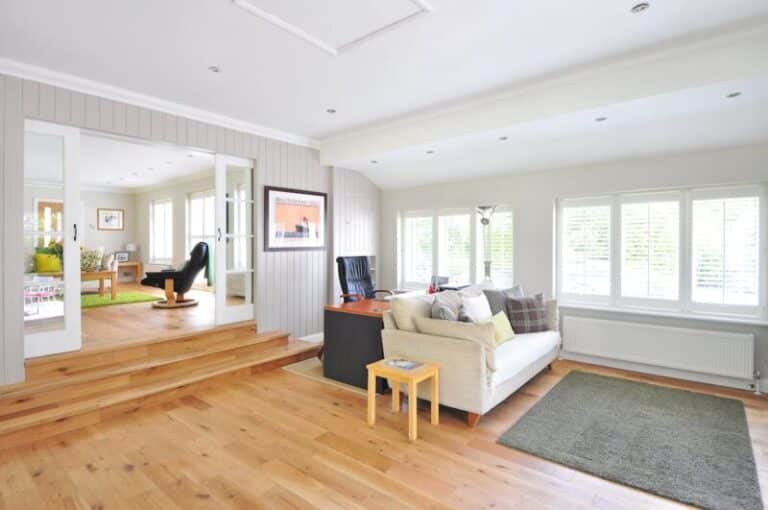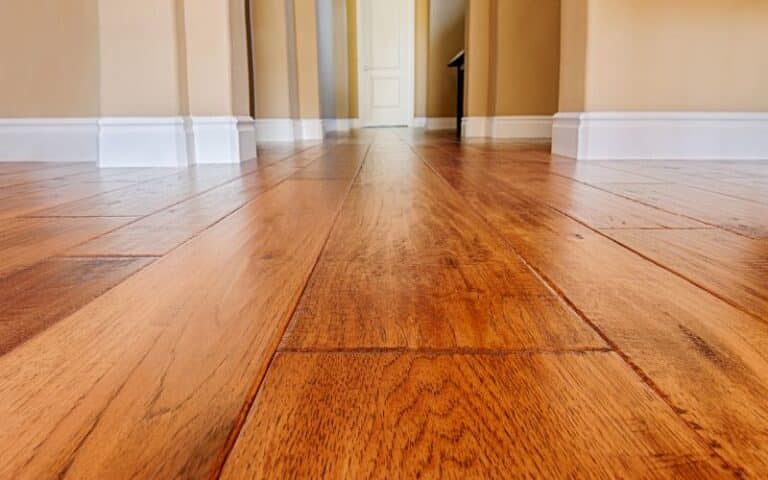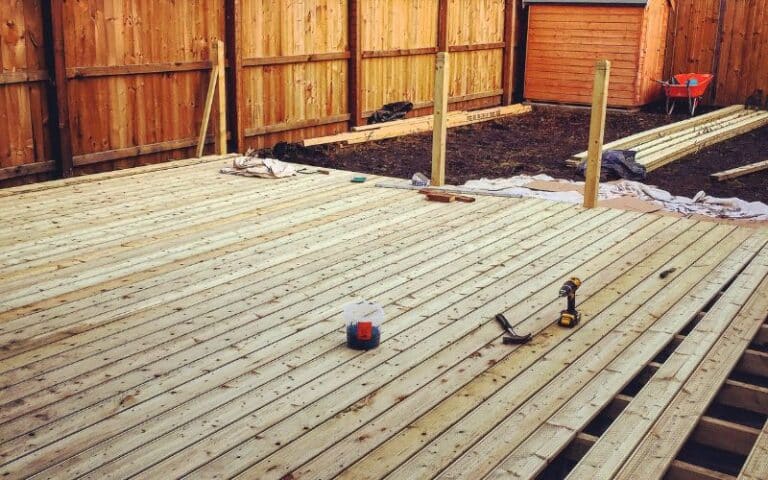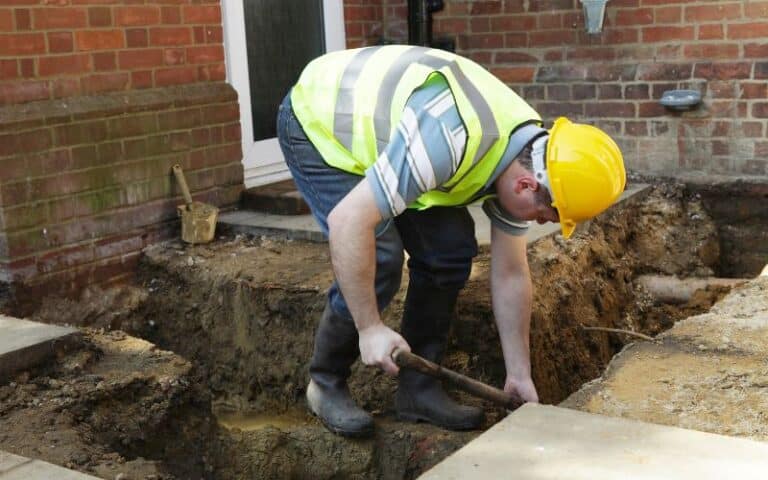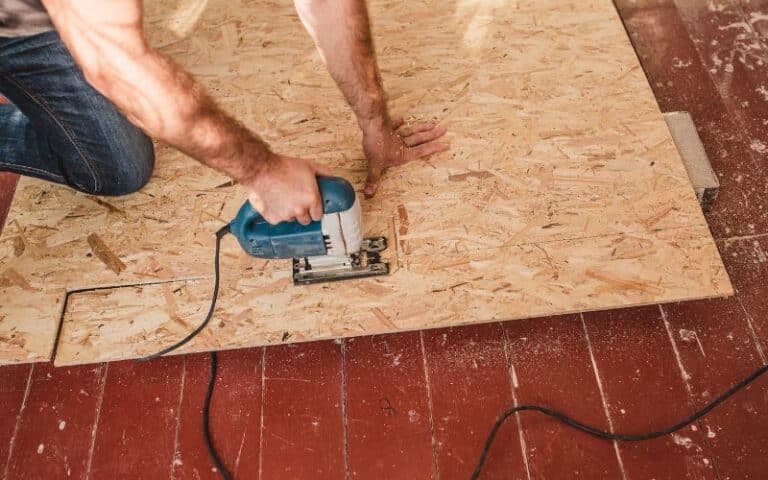If you’re considering using vinyl plank flooring for your stairs, chances are you’ve discovered the many benefits you can get from vinyl plank flooring.
If you’re fixing the floors, you can easily place the planks on your stairs. Also, the flooring always turns out beautiful and is quite durable.
First, you’ll need to measure the dimensions of the stair landing. Afterward, cut the planks so everything fits perfectly before installing them. Begin by installing the first plank at the edge of the landing, and then work your way back to the wall. Always install your planks using glue instead of floating them.
Vinyl Plank flooring is becoming a very popular flooring material for stairs as many people discover its beauty and durability.
However, if you’ve never installed vinyl plank flooring before, you may struggle. Everything you need to know about installing the flooring on your stairs is in this article.
Ready for a Flooring Quiz?
Can I Do Stairs With Vinyl Plank Flooring?

You can do stairs with vinyl plank flooring, and it is becoming a very popular material among homeowners and building contractors because of its many benefits.
You can install it quite easily; it makes your floors look beautiful and very durable. So, if you choose to install vinyl plank flooring, it will last very long.
Furthermore, homeowners love vinyl plank flooring because they can easily access it, and it is also more affordable than other flooring options.
If you’re working on a budget, consider using vinyl planks because you can work within your budget with them.
It would help if you usually had a lot of material to cover stairs, so using affordable materials can be an added advantage.
Furthermore, Vinyl plank flooring has a lot of design options, so you have a lot of textures, colors, and patterns to choose from.
The flooring also has a top layer resistant to scuff, stains, or scratches. This makes Vinyl plank flooring very durable, and you can use it for a long time.
In addition, the materials used to manufacture the planks make the surface completely waterproof, which makes it perfect, especially if you have young children.
5 Steps to Do Stairs With Vinyl Plank Flooring (A Detailed Guide)
First, you must assemble the tools and materials needed to install the flooring before you even begin.
Some of the tools you’ll need include;
- Carpenter’s square
- Drill or nail gun
- Stair tread Gauge
- Caulking gun
- Blade
- Saw
- Tape measure
In addition, you’ll need the following materials
- Vinyl planks
- Nails or screws
- Stair nosing
- Adhesive or construction glue
You can begin installing the vinyl planks on your stairs when you have everything you need.
#1. Prepare the Stairs
Remove any moldings around the staircase; the stairs must be bare to get accurate measurements.
You can also sweep the stairs and mop them so that you can work on a clean surface. In addition, make sure the stairs are on level ground so you can work smoothly.
#2. Install the Planks on the Stair Riser
The stair riser is the top part of each stair, so installing the planks on the stair riser first is best.
- Measure the height and the length of the stair riser and cut out a vinyl plank to fit the exact height and length.
- Smear the adhesive evenly behind the plank and place it against the stair riser.
- Ensure the plank holds tightly, and you can use either your screws or your nails to hold the planks more tightly to the wall.
#3. Measure the Planks for the Stair Tread and Stair Nose
The stair tread is the part of the stairs you walk on. When you’ve installed the planks on the top part of the stairs, you’ll need to install them on the stair nose.
So, measure the stair tread carefully using your carpenter’s square. When you’ve gotten the correct measurement for the stair tread, you can also measure for the stair nose.
Installing planks on the stair nose means placing a piece of trim on the edge of each staircase. Doing this gives your staircase edges a fluid and beautiful finish.
In addition, when you install planks on the stair nose, it will make your staircase safer and also make it more durable even if you have multiple persons using the stairs.
Here are some tips you may find useful when measuring the planks:
- Measure the vinyl planks for the bottom steps to ensure they’re square.
- When you’re measuring the depth of the tread, double-check the width of the stair nose.
- If the stair’s width exceeds the plank, you can install it and then use another plank to cover up the extra space.
#4. Install the Planks on the Stair Tread
You can install the tread and stair nose once you’ve measured everything and found the correct fit.
- Apply adhesive behind each plank and use little force or pressure to attach it to the stair tread. Use an S pattern to make the stairs stronger.
- You can also use screws or nails to hold the planks in place. If you use them, always place them along the edges or corners.
#5. Install the Stair Nose
To install the stair nose, you can either use the shim or go for the nose that snaps over the planks.
- Apply some glue on the shim’s open end afterward and some on the nosing plank.
- Place the nosing at least an inch from the edge of the tread and apply at least half a dozen fasteners to it.
- But, if you don’t use the shim, you have to apply some glue on the nosing and use it to cover the edges of the stairs. You don’t need any fasteners or nails for this.
Once you start, it will be simpler as you progress. Start from the bottom to the top, and repeat the steps until you cover the entire staircase.
Can Stairs With Vinyl Plank Flooring Carry Load?
Vinyl plank flooring can carry the load, while many homeowners install vinyl because it has a beautiful aesthetic and is easy to clean. But, it also holds up well with foot traffic.
The good thing about Vinyl plank flooring is that it can safely hold if you place normal-sized household items on it. One vinyl plank can hold at least 500 pounds in weight.
However, it would be best to remember that vinyl flooring is not as strong as regular hardwood floors. And if you put too much weight on it, it can cause indentations and bending.
So, vinyl plank flooring can carry normal-sized household items, but items like pianos, refrigerators, and other heavy appliances can put too much strain on the floors.
Remember that it is perfectly safe since vinyl plank floors can hold up to 500 pounds, especially since the object’s weight won’t go on one plank.
The floors are not as durable as hardwood floors but are also very durable and hardly get damaged.
However, the manufacturers encourage homeowners to place a lower weight on it than it can handle to prevent any possible damage.
In addition, if you install the planks properly, they’re more likely to hold up even if you place heavy objects on them.
Do Stairs With Vinyl Plank Flooring Last?
Vinyl plank floors are durable and long-lasting; if you install and maintain them correctly, they can last for about 15-20 years.
Because vinyl plank floors are so durable, you can install them in the part of your home with the most foot traffic, which is usually the living room, kitchen, and stairs.
Furthermore, almost all vinyl planks have a protective layer on the top that helps increase the longevity of the flooring. This layer comes with 15-year warranties for some products.
However, it would help if you also kept in mind that, like most products, vinyl flooring comes in different qualities, and the higher the quality of the material, the longer it will last.
Furthermore, vinyl tiling also has a stain-resistant top surface. So, if there are any spills and stains on the vinyl flooring, you can clean it and have it look new.
It is very easy to maintain vinyl plank flooring, and you can sweep your vinyl plank floors to remove dirt and grit and run a wet mop on the floor to remove any dust.
Once you clean the floor, it will return to looking as new and shiny as it did when you bought it at first.
In addition, vinyl plank flooring is durable. But, if you purchase low-quality vinyl planks, they can tear or rip.
Since you can’t repair vinyl plank flooring, you’ll have to replace the plank once there is a tear. So, it is best to install high-quality planks so they can serve you longer.
Finally, sunlight can damage vinyl planks or cause them to fade over time. But, you can keep the damage minimal by closing window blinds or curtains when there is a lot of sunshine.
If you plan on using vinyl plank flooring for your floors, you should know its advantages and disadvantages before deciding what to do.
| Pros | Cons |
|---|---|
| Vinyl flooring is very affordable | Prone to indentations, gouges and scratches |
| You can install it easily using glue or by locking it. | It may fade after some time, especially if exposed to sunlight |
| Vinyl planks are 100% waterproof | If you select planks that use adhesive, they can be very difficult to remove |
| The floor is easy to maintain | It is not environmentally friendly due to the materials used. |

